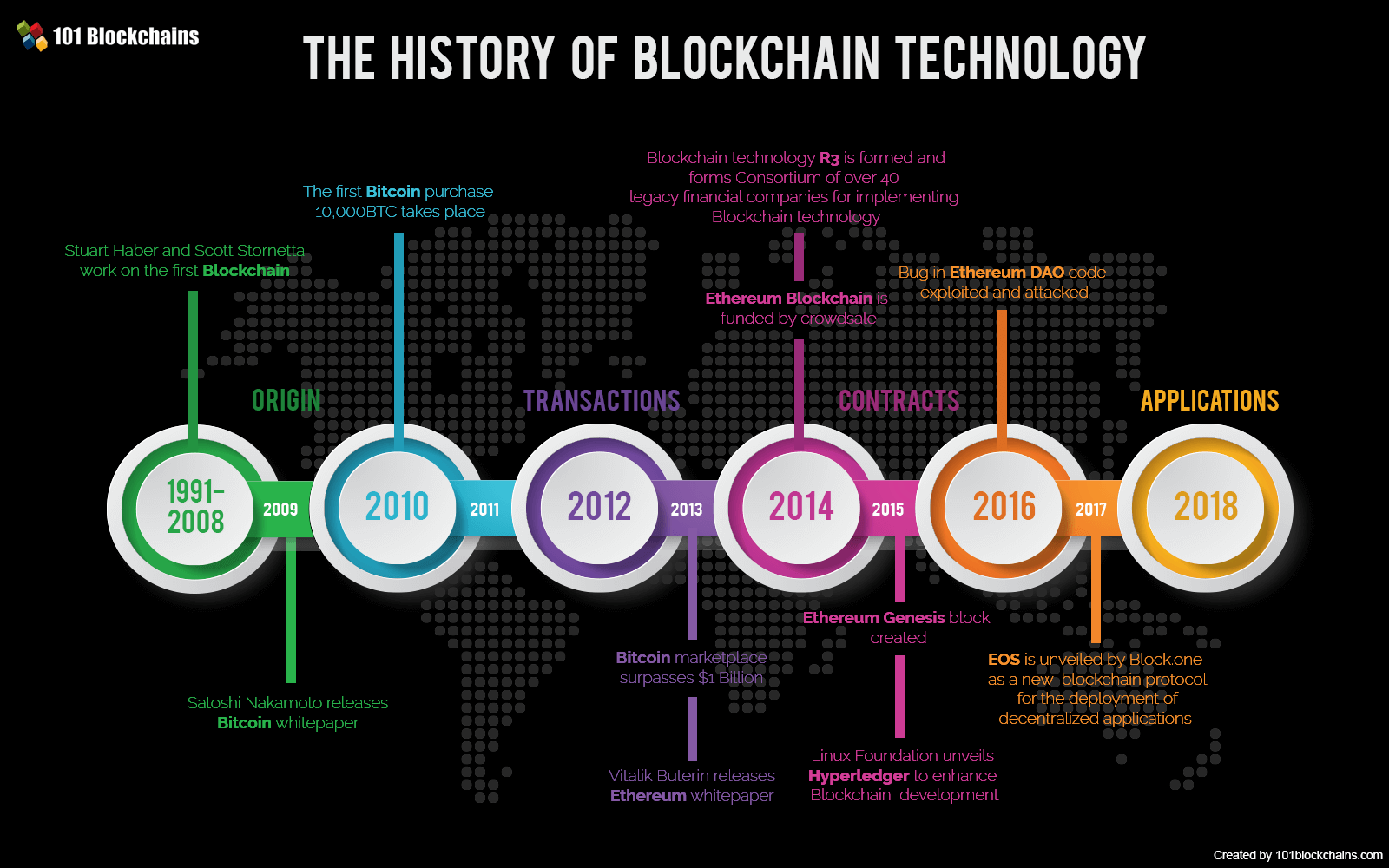Blockchain technology, often synonymous with cryptocurrencies like Bitcoin, has rapidly evolved from a niche concept to a foundational technology with potential applications across numerous sectors. Its journey from inception to mainstream adoption is a fascinating tale of innovation, challenges, and transformative potential.
The Origins: Conceptual Foundations
Researchers Stuart Haber and W. Scott Stornetta initially proposed the idea of a blockchain-like protocol in 1991. Their goal was to create a system in which document timestamps could not be altered. Although they worked with cryptographically protected chains of blocks, the concept of blockchain was not fully realized until 2008.
The Emergence of Bitcoin: Blockchain 1.0
The blockchain as we know it today began with the anonymous Satoshi Nakamoto’s 2008 release of the Bitcoin whitepaper. This article, titled “Bitcoin: A Peer-to-Peer Electronic Cash System,” described a decentralized digital currency that recorded transactions in an immutable, safe ledger.
In 2009, Nakamoto released the first version of Bitcoin software, and the genesis block was mined. This marked the beginning of Blockchain 1.0, characterized by its primary use case: digital currency. Bitcoin demonstrated how blockchain could solve the double-spending problem without the need for a central authority, using a combination of cryptographic techniques and consensus mechanisms, specifically the Proof of Work (PoW).
Beyond Currency: Blockchain 2.0
The popularity of Bitcoin sparked curiosity about the underlying technology, which made it clear that blockchain technology has applications beyond virtual money. As a result, Blockchain 2.0 was created, utilizing the technology for decentralized apps (dApps), smart contracts, and other non-monetary use cases.
The Ethereum blockchain platform, which was introduced by Vitalik Buterin in 2013, is intended to facilitate a broader range of applications due to its Turing-complete programming language.The concept of smart contracts—self-executing contracts with terms embedded directly into the code—was first introduced by Ethereum. Since its 2015 launch, Ethereum has served as the basis for several innovative decentralized apps, greatly enhancing the capabilities and reach of blockchain technology.
Scalability and Interoperability: Blockchain 3.0
Blockchain technology had a number of difficulties as it became more widely used, such as energy consumption, interoperability, and scalability. By addressing these problems, Blockchain 3.0 seeks to improve the technology’s viability for broad application.
Interoperability is the main emphasis of projects like Polkadot and Cosmos, which allow data sharing and communication between various blockchains without any problems. Enhancing scalability and lessening the environmental effect of blockchain operations are goals of solutions such as the Proof of Stake (PoS) implemented in Ethereum 2.0 and the Lightning Network for Bitcoin.
Enterprise Adoption and Real-World Applications
Beyond cryptocurrencies and smart contracts, blockchain has found applications in various industries. In supply chain management, blockchain provides transparency and traceability, ensuring the authenticity of products. In finance, it facilitates secure and efficient transactions and settlement processes. Healthcare uses blockchain for secure patient records, while the legal sector explores its potential for tamper-proof evidence and contract management.
Governments and large companies have also started investigating blockchain technology. Blockchain is used by IBM’s Food Trust network to monitor food supply chains, and nations such as Estonia have deployed blockchain technology for e-governance and secure digital identification.
The Future of Blockchain
The evolution of blockchain is ongoing, with continuous research and development aimed at overcoming current limitations and discovering new applications. Emerging trends include the integration of blockchain with other technologies like artificial intelligence and the Internet of Things (IoT), as well as the exploration of decentralized finance (DeFi) and non-fungible tokens (NFTs).
As blockchain technology matures, its potential to revolutionize various sectors becomes increasingly evident. The journey from a conceptual cryptographic solution to a transformative technology underscores the innovative spirit that drives the evolution of blockchain, promising a future where decentralized, secure, and transparent systems are the norm.
In conclusion
the history and evolution of blockchain highlight a trajectory of rapid innovation and expanding potential. From its origins in cryptographic research to its current status as a foundational technology with diverse applications, blockchain continues to shape the future of digital interactions and decentralized systems.










